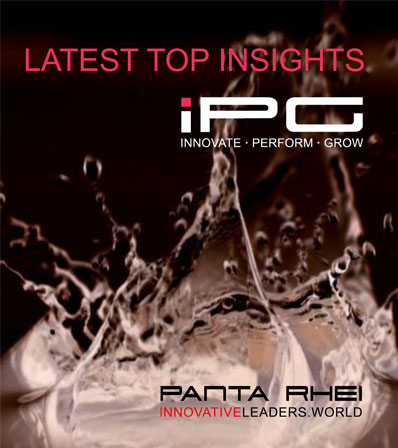Covid-19 brought the world to a stop. But what we’re facing now is not so much a problem of manufacturing — it’s a problem of logistics, and it’s affecting multiple sectors all over the world.
Regardless of what sector of business you are in, now is the time to learn about the potential challenges ahead to better prepare for what’s to come. These are the trends you should expect to see in 2022.
1. Out-of-sync supply chain
Because our world has been very reliant on lean, just-in-time supply chains, businesses haven’t had the chance to build enormous inventory buffers to meet the demand associated with the disruption in supply. This is best evidenced by the phenomenon occurring in North America, where the ports of Los Angeles and San Francisco are severely congested.
Prior to Covid-19, the process of emptying containers and sending them back to China to be refilled worked in a very synchronized way. Due to the surplus of containers sitting in US ports, that process has been severely impacted, leaving countries like China with a shortage of containers to fill.
2. The war on talent
We’re currently witnessing what’s called “The Great Resignation”, and the effects of it are manifesting in professions that, traditionally, were not very well paid or in which the work conditions weren't brilliant. People in those positions, like delivery and truck drivers, are now electing to go do other things. So, the demand for the workforce and the thirst for talent is going to be extraordinary.
For example, in the last few months, my company employed a couple of procurement people in the tri-state area of the US. One hire worked for a week and then went back to their former employer with a raise and promotion.
So, on top of it being difficult to attract talent, it’s even more difficult to sustain it. Employers are going to have to work extra hard and really invest in the workforce by offering better training, sponsoring college degrees, and proving that they care about the development of their people. This is also a great time for employers to open their doors to people from various ethnic backgrounds, which, historically, have never had a fair crack of the whip.
3. A focus on the environment
There’s a big debate happening right now regarding countries that have a large energy mix using coal, giving these locations a cost advantage that we exploit as a low-cost source of supply, regardless of the environmental impact of this energy mix.
As a way to discourage businesses from sourcing products in this way, the British government is sponsoring the idea of overlaying a carbon tax on everything bought from these other countries, making it much more cost-effective to buy from different markets that may have a better environmental strategy. We’re going to see the effects of this much more now coming off the back of COP26, the UN Climate Change Conference in Glasgow.
It’s time to start factoring the cost of the environment into our total cost of supply. To tackle the environmental issue at hand, a good starting point is for companies to start measuring their own carbon emissions. This can be done by taking a look at buildings, manufacturing processes, travel, and the increasing phenomenon of the scope three emissions of your supply chain.
There are million and billion-dollar organizations already measuring and cutting back their emissions, and it’s possible for them to do this because of their massive budgets. Small businesses, on the other hand, are going to need guidance and help to figure out what they can do from a carbon emissions perspective and how they can make it work on a limited budget.
Collectively, we’re all going to have to lean into this to figure out how we can begin to fundamentally take carbon out of the things we do in our business.
4. Production constraints
For a good example of production constraints, look no further than the automotive industry. While deploying an amazing array of technologies, the industry has been facing a shortage of semiconductor chips, and this will likely continue over the next two years because of the number of chips required in modern vehicles.
About 20 years ago, you could have counted the number of semiconductor chips in a vehicle on one hand. Today, you need both of your hands and feet, especially when it comes to electric vehicles, which require even more semiconductor chips than internal combustion-engine vehicles. That thirst for digital technology is going to put an enormous amount of strain on the factories, and they’re going to struggle just to keep up with the sheer pace of demand necessary to successfully transition away from carbon-emitting vehicles.
This example is illustrative, but I believe many production constraints lie before us as whole sectors begin to transition to a low-carbon world, and planning long-term demand, with resilience built-in, is going to be important.
5. High inflation
Historically, procurement has been able to hedge against inflation by being very aggressive on the sourcing side, and that has presented two problems. Over a generation, people have sourced things to low-cost markets, and those are now the markets that are facing cost inflation, so you really can't go anywhere else to buy cheaper.
If you overlay the issues with the war on talent, environmental taxes, and supply shortages, the cost of business is going to continue to rise.
In response, sourcing with a total cost of ownership mindset, understanding not only the initial cost to purchase but the ongoing support and operation of purchase decisions, and a fundamental re-alignment of the specifications of the “design-to-afford” mentality will help offset these potential increases.
6. Stronger social obligation
Procurement now feels much more obligated to make sure the working conditions of our suppliers and the salary and minimum wage that those people earn is enough for them to have a relatively good standard of life. Nobody wants to be affiliated with a brand that compensates their workers so poorly that they struggle to put a meal on the table for their families.
From a procurement perspective, we've pushed and negotiated suppliers to bring their rates down to meet a long list of requirements that are far less mission-critical to the product than they are an indulgence.
For example, when buying new technology, you will often describe thousands of things you want it to do when, in actuality, only a small number of those things are necessary. There is a certain amount of indulgence that businesses have with their technology budget, and they think they need to specify everything. Frankly, businesses need to focus less on indulgences and much more on the things actually needed to drive change in business.
7. Data
The year 2022 is going to be a really interesting and tough one. While, to some degree, Covid-19 will be behind us in the UK and North America, it will still very much be affecting emerging economies around the world where they've not been able to exercise vaccination programmes. The most accessible tool to help businesses navigate trends in procurement is one I’ve talked about extensively: data.
Going forward, we need to focus on the harvesting and use of data. Making sure your suppliers are diverse and inclusive, ensuring they have a strategy for carbon emissions, and everything else I’ve discussed here means nothing if you haven't got a way of measuring it and using the data that comes from doing so. So, the more sophisticated we become in pulling data together and building systems, protocols, and processes around it, the better prepared we’ll be to tackle challenges brought on in the future.
This article was originally posted by: CIPS

















